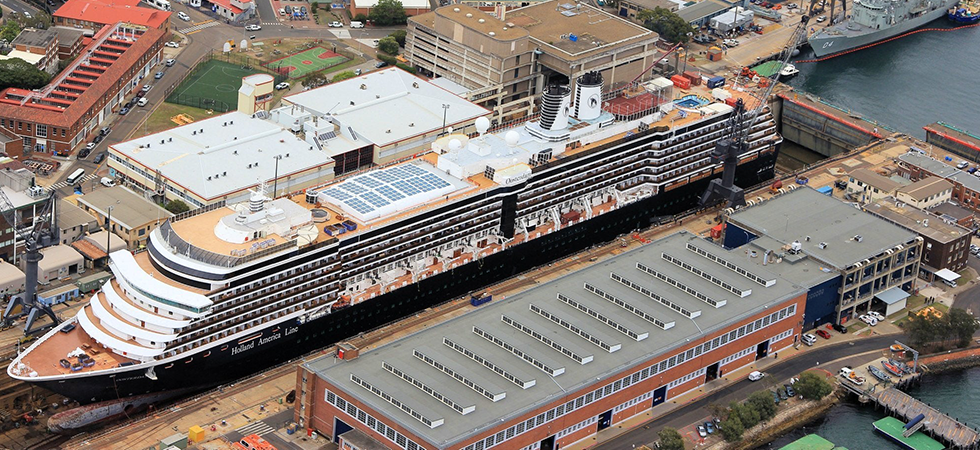
Before we learn about graving dock, it is important to understand first about what is a dry dock. As we know, every vessel needs to have its maintenance. To be able to do the repair and maintenance work, especially for the bottom part that is always exposed to seawater, the vessel will need to go to dry docks. The dry dock itself is a narrow basin where a vessel can come to rest on a dry platform. There are several types of dry dock which are the graving dock, floating dock, ship lift, and an open space with a balloon system.
A dry dock is a must for every vessel to test the seaworthiness of the vessel. Based on SOLAS regulation, every merchant vessel needs to have a complete hull survey every twice in 5 years. Furthermore, every merchant vessel also needs to have an intermediate survey for every year or a year and a half. Includes in the survey schedule, the vessel could also have any necessary repair and maintenance for propeller, rudder, hull, and any parts that can only be repaired when the vessel is in the dry dock.
Graving dock is the most traditional form of dry docks. Usually, graving docks are made in the form of the narrow basin and constructed using earth berms and concrete, complete with blocks, wall, and gate. A graving dock is build on land near the coastal waters so that the vessel could enter the graving dock directly from the sea or river.
The way graving dock works is very simple as described below:
1. First, the blocks will be arranged based on the docking plan.
2. Once the block is ready, the graving dock will be flooded so that the vessel could enter the dock.
3. Gate will be opened to allow the vessel to go in the dock space guided by the tug boat.
4. Once the vessel is inside, the gate will be closed and the water inside the dock will be pumped out so that the vessel can rest on the blocks.
5. Inspection, repair and maintenance process can proceed.
Once the repair and maintenance is finish, the vessel will be back to operate following the same procedure as the docking procedure. The docks will be flooded and after the gate is open, the vessel will be guided by a tugboat to sail back into the sea.
There are several advantages and disadvantages to using a graving dock. Please use this information to compare which types of dry dock will be worth your investment.
Advantages of Graving Dock:
1. Graving dock can accommodate bigger size vessels compare to other types of dry dock.
2. Cheaper to invest instead of a floating dock.
3. Easy to maintain while a floating dock also needs to be dry-docked as it is also categorized as a vessel.
4. Easy access for all the equipments and tools since it is land-based dry dock.
5. The big size of the graving dock allows the dockyard to repair 2 vessels simultaneously in the same graving dock.
Disadvantages of Graving Dock:
1. All the machinery and equipment need to be taken out for the flooding phase which will takes time.
2. The malfunction of the gates will result in the non-operational graving dock.
3. If there are 2 vessels in the docks, the repair and maintenance operation needs to be stopped when anyone of the vessel needs to be taken out of the graving dock as the dock will be flooded.
Those are the information available for a graving dock. There are several types of dry dock that will be suitable for you depending on the types of vessels that you plan to serve and the location of the dockyard. Choose your investment wisely.
Dredgers are important machines used for excavation and land reclamation in water bodies. They come in different shapes, sizes, and types, depending on the specific purpose they are designed for. I....
Pilot boats play a vital role in ensuring the safety and efficiency of maritime transportation. These boats are designed to transport pilots to and from ships that require their expertise in navig....
Self-propelled barges are vessels that are designed to transport large quantities of cargo on inland waterways. These barges are propelled by their own engines, making them highly efficient and cos....
Barge/ Dumb Barge A barge is a flat-bottomed boat that is designed to transport goods or people on inland waterways or near-shore locations. Dumb barges, also known as unpowered barges, are t....